In Defense of Pure Mathematics
By Daniel S. Silver
After 75 years, Godfrey Harold Hardy’s A Mathematician’s Apology still fuels debate over pure versus applied mathematics.
After 75 years, Godfrey Harold Hardy’s A Mathematician’s Apology still fuels debate over pure versus applied mathematics.

DOI: 10.1511/2015.117.418
(This article is an extended online-exclusive version of the one that appeared in print and digital editions.)
Godfrey Harold Hardy was one of the greatest number theorists of the 20th century. Mathematics dominated his life, and only the game of cricket could compete for his attention. When advancing age diminished his creative power, and a heart attack at 62 robbed his physical strength, Hardy composed A Mathematician’s Apology. It was an apologia as Aristotle or Plato would have understood it, a self-defense of his life’s work.
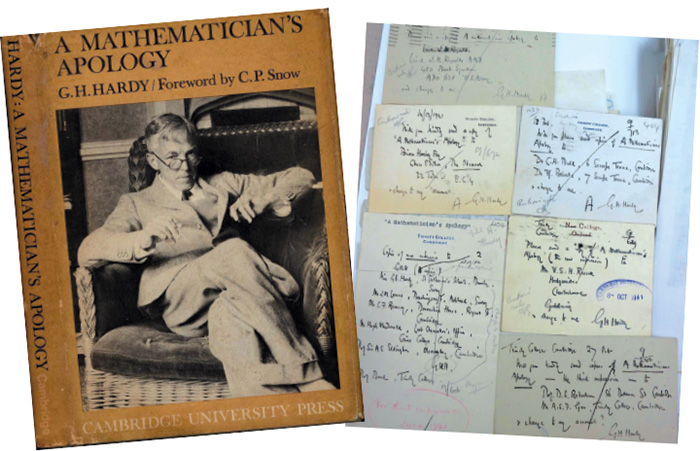
Postcards photograph courtesy of Cambridge University Library.
“A mathematician,” Hardy contended, “like a painter or poet, is a maker of patterns.... The mathematician’s patterns, like the painter’s or the poet’s, must be beautiful; the ideas, like the colours or the words, must fit together in a harmonious way.” It was a personal and profound view of mathematics for the layman, unlike anything that had appeared before. The book, which this year reaches the 75th anniversary of its original publication, is a fine and most accessible description of the world of pure mathematics.
Ever since its first appearance, A Mathematician’s Apology has been a lightning rod, attracting angry bolts for its dismissal of applied mathematics as being dull and trivial. The shaft that lit up the beginning of a review in the journal Nature by Nobel laureate and chemist Frederick Soddy was particularly piercing: “This is a slight book. From such cloistral clowning the world sickens.”
"A mathematician, like a painter or poet, is a maker of patterns.... The mathematician’s patterns... must be beautiful; the ideas, like the colours or the words, must fit together in a harmonious way."
Hardy’s opinions about the worth of unfettered thought were strong, but stated with “careful wit and controlled passion,” to borrow words of the acclaimed author Graham Greene. They continue to find sympathetic readers in many creative fields. They were prescient at the time, and remain highly relevant today.
Hardy was born on February 7, 1877, in Cranleigh, Surrey. His parents valued education, but neither had been able to afford university.
Hardy grew up to be a scholar, a sportsman, an atheist, and a pacifist, but above all, he was an individualist. In an obituary of him, the mathematician E. C. Titchmarsh recalled: “If he dined at high table in tennis clothes it was because he liked to do so, not because he had forgotten what he was wearing.”
Portents of Hardy’s interest in mathematics as well as his lack of interest in religion were apparent at an early age. In church his energies were usually directed toward factoring numbers on hymn boards rather than toward worship. But his attitude about religion went deeper than mere disinterest. According to Titchmarsch:
Hardy always referred to God as his personal enemy. This was, of course, a joke, but there was something real behind it. He took his disbelief in the doctrines of religion more seriously than most people seem to do.
Hardy exhibited his disbelief in odd ways. For example, he refused to enter any religious building. Mathematician George Pólya remembered that whenever he and Hardy walked past a church, Hardy would be sure that Pólya was between him and the building. Pólya never knew the reason.
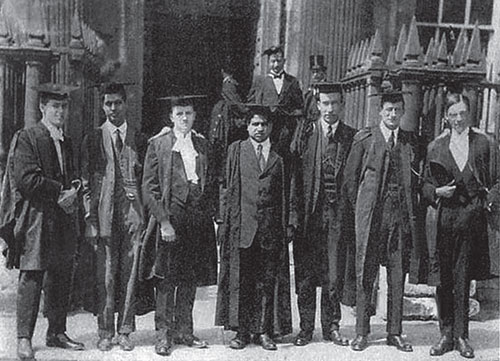
Wikimedia Commons
Hardy began a famous collaboration with analyst J. E. Littlewood in 1911. Two years later they would pore over strange handwritten mathematical manuscripts that had been sent unsolicited by a young Indian civil servant, Srinivasa Ramanujan. Together they would decide that it was the work of a true genius. After considerable effort, Hardy succeeded in bringing Ramanujan to the University of Cambridge, where Hardy was a professor. The “one romantic incident in my life” is how Hardy described his discovery and collaboration with his young protégé, who tragically died of illness seven years later.
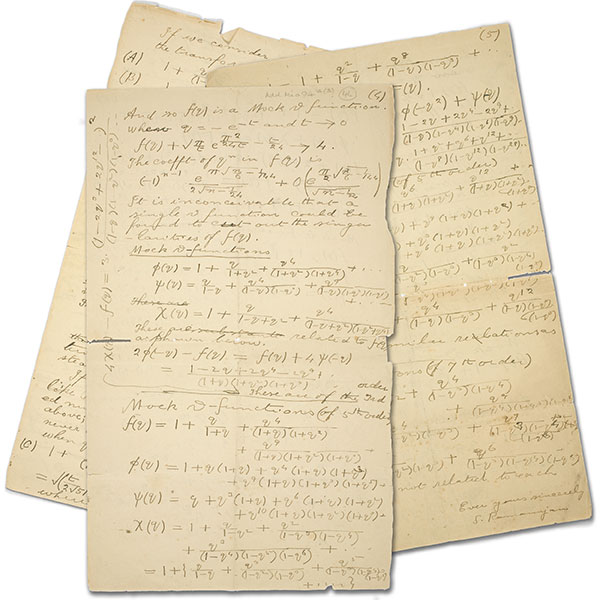
Wikimedia Commons
The atmosphere at Cambridge was nearly unbearable for Hardy during the World War I years of 1914 to 1918. Many of his friends and colleagues, including Littlewood, had gone off to fight. Hardy was a pacifist but not a conscientious objector: He volunteered for service only to be rejected on medical grounds. His deep regard for German culture and equally deep distrust of politicians compounded his emotions. In 1916 his pacifist friend Bertrand Russell was dismissed from his lectureship at Trinity College of Cambridge for printing “statements likely to prejudice the recruiting and discipline of His Majesty’s forces.” Hardy felt quite alone.
In 1919, Hardy moved to Oxford University, where his eccentricities thrived, and he was again happy and productive. In his rooms he kept a picture of Vladimir Lenin. He shunned mechanical devices such as telephones, would not look into a mirror, rarely allowed his photograph to be taken, and was very shy about meeting people. Nevertheless, he was a superb conversationalist, able to carry on talk about many subjects (including, of course, cricket). Titchmarsh recalled: “Conversation was one of the games which he loved to play, and it was not always easy to make out what his real opinions were.”
Pólya had a similar recollection: “Hardy liked to shock people mildly by stating unconventional views, and he liked to defend such views just for the sake of a good argument, because he liked arguing.”
It is clear that Hardy enjoyed teasing his audience, something one should keep in mind when reading A Mathematician’s Apology.
The offer of the Sadleirian chair of pure mathematics at Cambridge was too great a temptation for Hardy. In 1931 he returned to the university by the River Cam, once home to Isaac Newton and James Clerk Maxwell. As his illness and debilitation progressed, academic honors accumulated: the Chauvenet Prize from the Mathematical Association of America in 1932, the Sylvester Medal from the Royal Society in 1940. The Copley Medal from the Royal Society was to be presented to him on December 1, 1942, the day he died.
Many reviews of A Mathematician’s Apology appeared during the first few years of its life. Most were favorable. The author of one such review, published in The Spectator in 1940, was Graham Greene. Hardy must have been flattered to read: “I know no writing—except perhaps Henry James’s introductory essays—which conveys so clearly and with such an absence of fuss the excitement of the creative artist.”
Other reviews were less enthusiastic. Today, as then, there are several reasons to be offended by A Mathematician’s Apology, especially if you are a scientist.
If you are the author of expository articles (such as this one), then you don’t have to wait long for an insult to be hurled your way. Hardy’s book began:
It is a melancholy experience for a professional mathematician to find himself writing about mathematics. The function of a mathematician is to do something, to prove new theorems, to add to mathematics, and not to talk about what he or other mathematicians have done. ...Exposition, criticism, appreciation, is work for second-rate minds.
Hardy enjoyed teasing his audience, something one should keep in mind when reading A Mathematician's Apology.
Most reviewers pardoned Hardy for this assertion. Félix de Grand’Combe, professor of French at Bristol University, did not. Writing in the Journal of Education in August 1943, the former French army officer exploded:
It really is a touching—albeit ostentatious—confession of a local intellectual debility... It is clear that Prof. Hardy is a great mathematician. It is no less clear, from his own showing, that one can be a great mathematician and yet fail to understand things that are readily comprehensible to an ordinary, well-educated mind.
Artists resent art critics, musicians scorn music critics. It is an ancient story, as Grand’Combe reminded readers in his lengthy review. However, he argued that observing and reformulating can be creative and illuminating acts:
When Linnaeus devised his wonderful classification of plants he didn’t “make” anything, he merely discovered a pre-existing treasure, explaining and rendering perceptible to all eyes a series of coherent relationships actually present in Nature, but his work altered and clarified our whole conception of the vegetable world; it gave informing reason to apparent chaos, life to what the ancients had seen as a dark welter of “non-being.”
If Hardy thought that exposition, criticism, and appreciation is work for second-rate minds, then he must have come to that conviction late in life. During his prime years, he wrote book reviews for The Cambridge Review, The Times Literary Supplement, Nature, and The Mathematical Gazette. He was an effective and enthusiastic lecturer, constantly in demand. His textbook A Course in Pure Mathematics, published in 1908 and still in print, is entirely expository.
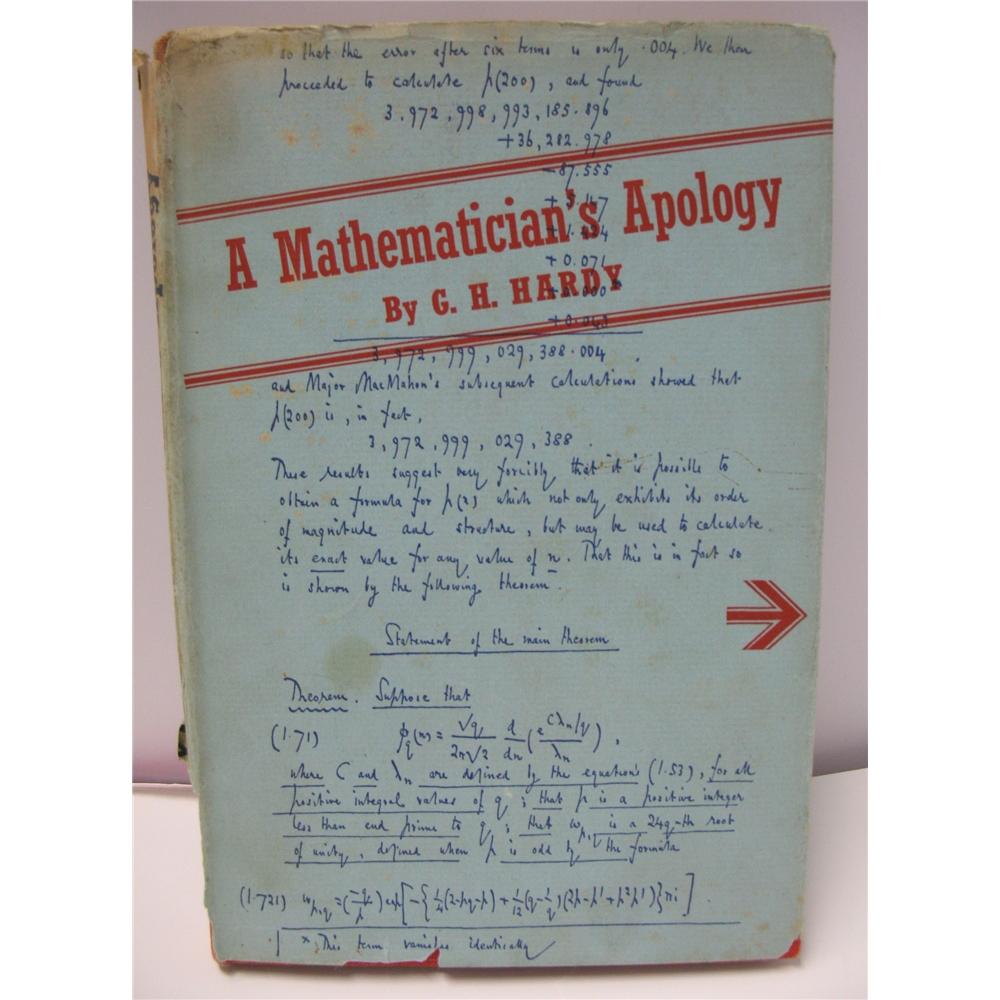
Photograph courtesy of Quagga Rare Books and Art, South Africa.
Greene and Grand’Combe had curiously different reactions to Hardy’s mathematical calligraphy sampled on the dust jacket of A Mathematician’s Apology. While Greene found mystical allure in “the author’s tiny algebraic handwriting, as beautiful as Greek,” Grand’Combe experienced nothing but incomprehension:
In a book whose jacket is illustrated by what, I presume, is a sample of creative mathematical calculation, culminating in a formula, wherein an array of more than twenty-five figures, interlaced with abundant pluses and minuses is locked in the cold embrace of at least three different kinds of brackets, Professor G. H. Hardy of Cambridge purports to address the layman.
If you are a biochemist in search of a cure for a dreadful disease, then you might be insulted by Hardy’s summary of your true motives. There are three: intellectual curiosity, professional pride (including anxiety to be satisfied with one’s performance), and ambition. According to Hardy:
It may be fine to feel, when you have done your work, that you have added to the happiness or alleviated the sufferings of others, but that is not why you did it.
Writing in The News Letter in 1941, the English physicist and philosopher of science Norman Campbell took Hardy’s assertions at face value. However, if a mathematician’s principal motivation is to benefit himself rather than society, he asked “why should we provide ...so many more comfortable jobs for mathematicians than for, say, poets or stamp-collectors?”
Should you be an older mathematician, you might be vexed by Hardy’s reminder: “No mathematician should ever allow himself to forget that mathematics, more than any other art or science, is a young man’s game.” After observing that French mathematical prodigy Évariste Galois died at 20, Ramanujan at 33, and Bernhard Riemann at 40, Hardy added: “I do not know an instance of a major mathematical advance initiated by a man past fifty.”
Cambridge University philosopher C. D. Broad responded:
To produce, as [Hardy] does, a list of persons who did supreme creative work in mathematics and then died young... is surely irrelevant. I suppose that the suppressed premise is that the work which they did before their early deaths was so stupendously great that it is incredible that they should have equaled it if they had lived.
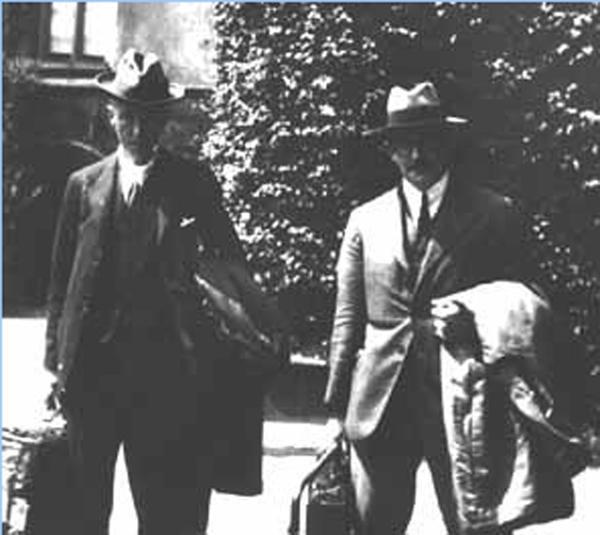
Photograph courtesy of the University of Cambridge.
Examples of mathematicians who have made significant discoveries after the age of 50 can be given easily. Littlewood, who remained productive well after the age of 90, is one counter-example. Nevertheless, Hardy’s belief is common today among mathematicians. It is encouraged by the fact that the Fields Medal, the highest award in mathematics, is awarded only for work done before the age of 40.
If you are a scientist whose feathers are not yet ruffled, Hardy’s main contention will surely disturb your plumage. “Real” mathematics, he argued, is almost wholly “useless” whereas useful mathematics is “intolerably dull.” By “real” mathematics, Hardy meant pure mathematics that tends to be abstract and general and, in Hardy’s opinion, has the most aesthetic value. Opposed to it is the bulk of mathematics seen in school: arithmetic, elementary algebra, elementary geometry, differential and integral calculus, mathematics designed for computation and having the least aesthetic appeal.
Hardy was both prosecutor and defender in an imaginary trial to determine whether his life had been worthwhile:
I have never done anything “useful.” No discovery of mine has made, or is likely to make, directly or indirectly, for good or ill, the least difference to the amenity of the world. ...I have just one chance of escaping a verdict of complete triviality, that I may be judged to have created something worth creating.
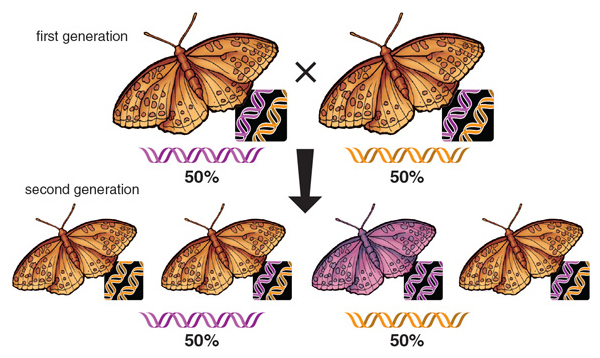
Barbara Aulicino
As more than one observer has noted, it is ironic that Hardy is perhaps most widely known for a discovery about genetics. A theorem that he and Wilhelm Weinberg independently proved is well known today as the Hardy-Weinberg principle.
But for Hardy, who lived through two world wars, number theory provided a retreat that was, thankfully, useless to military planners. Hardy had opposed England’s entry into the first World War, a deadly conflict made more so by science and technology. A Mathematician’s Apology was first published in 1940, when England was again at war. Borrowing from his own article, “Mathematics in Wartime,” published in the journal Eureka in 1940, Hardy wrote in Apology the same year that “When the world is mad, a mathematician may find in mathematics an incomparable anodyne. For mathematics is, of all the arts and sciences, the most austere and the most remote.”
According to Hardy, the mathematician’s world is directly linked to reality. Theorems are non-negotiable. In contrast, he says, the scientist’s reality is merely a model. “A chair may be a collection of whirling electrons, or an idea in the mind of God,” he declared. “Each of these accounts of it may have merits, but neither conforms at all closely to the suggestions of common sense.” The pure mathematician need not be tethered to physical facts. In Hardy’s words: “’Imaginary’ universes are so much more beautiful than this stupidly constructed ‘real’ one.”
Frederick Soddy, who had helped the world understand radioactivity, was disgusted by such sentiments. In his review in Nature, he said that if Hardy were taken seriously, then the “real mathematician” would be a “religious maniac.”
Soddy added a rebuke:
Surely in these times a little appreciation of the military virtues, rather than the conventional vilification of the profession of arms, is called for by religious people of all sorts, especially since their sort of “education” is really at the bottom of the whole tragedy, and the chemist’s bombs and poison-gas are such a heaven-sent whipping boy for their own.
Hardy was aware of Soddy’s review. He might have been amused by it. A letter to him from R. J. L. Kingsford at Cambridge University Press, dated January 1941, concluded: “I quite agree that Soddy’s amazing review in Nature is a most valuable advertisement. I enclose a copy of the review, herewith.”
The notion that mathematicians form a self-protected priesthood with their own religion was popular. It runs throughout Lancelot Hogben’s Mathematics for the Million, a highly successful book about mathematics that has sold well since 1937. After condemning Pythagoras and Plato for their excessive fondness for abstraction, Hogben wrote:
The fact that mathematicians are often like this may be why they are so inclined to keep the high mysteries of their Pythagorean brotherhood to themselves.
In their reviews both Soddy and Broad suggested that Hardy’s book might have been in part a response to Hogben. Hogben criticizes Hardy in Mathematics for the Million, which adds credence to the theory.
Another condemnation of A Mathematician’s Apology came from E. T. Bell, a mathematician and science fiction writer who is best remembered for his 1937 book Men of Mathematics. In his review, published in The Scientific Monthly in 1942, Bell recommended Hardy’s book to “solemn young men who believe they have a call to preach the higher arithmetic to mathematical infidels.” He concluded: “Congenital believers will embrace [Hardy’s book] with joy, possibly as a compensation for the loss of their religious beliefs of their childhood.”
Hardy had intended to publish A Mathematician’s Apology with Cambridge University Press at his own expense. However, Press Secretary S. C. Roberts recognized the value of the 90-page essay, and endorsed it to the Syndics, the governing body of the Press. At meetings in July 1940, it was decided that 4,000 copies of A Mathematician’s Apology would be printed. The sale price would be 3 shillings, 6 pence each, roughly 8 pounds in today’s British currency.
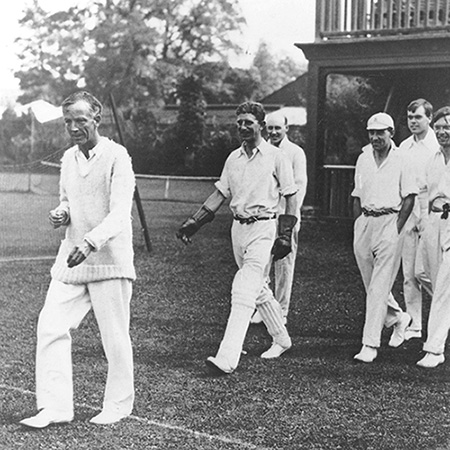
Photograph courtesy of the University of Oxford Mathematical Institute.
Postcards from Hardy requested that presentation copies be sent to colleagues, including Broad and Littlewood, the physicist Sir Arthur Eddington, chemist and novelist C. P. Snow, cricketer John Lomas (to whom he dedicated the book), and his sister Gertrude, with whom he was very close. He also requested copies be sent to colleagues in the United States.
A letter to him, dated May 29, 1941, is a reminder of the devastation being caused by the war: “...copies which were being bound for a second shipment have unfortunately been destroyed by enemy action at one of our binders.”
A Mathematician’s Apology sold well. Additional printings of 2,500 copies were made in 1941. Another 2,000 copies were printed in 1948, the year following Hardy’s death.
In June 1952, Hardy’s sister wrote to the Press:
As A Mathematician’s Apology is now impossible to get, both first hand and second hand, I expect that you will in time be reprinting it; I think that it would be a good idea to have a photograph of my brother in it granted that it did not make it too expensive. I have the negative of which the enclosed photograph is an enlargement; it is an amateur snap and extremely characteristic.
The photograph that she sent would eventually appear on the dust jacket of the second edition, and has become a well-known image of her brother wearing a white suit, seated in a wicker chair. Hardy, peering over his glasses, seems to be examining the photographer. Secretary R. W. David, who was now handling the project, replied to Gertrude enthusiastically. She wrote back a few days later: “I think that it is far the best ever taken of my brother.”
Reissuing A Mathematician’s Apology would be difficult. Inflation in Britain had made it impossible to reprint so small a book at a reasonable sales price. Some sort of material would be needed to extend it. The Rouse Ball Lecture, “Mathematical Proof,” which Hardy had delivered in 1928 was considered. So was “What is Geometry?,” Hardy’s Presidential Address to the Mathematical Association of America in 1925. Nothing seemed appropriate.
In 1959, 11 years later, chemist and writer C. P. Snow suggested that he might write an introduction. It seemed a superb idea. Snow is best remembered for his 1959 essay The Two Cultures, describing the purported conflict between scientists and humanists. He had advised Cambridge University Press during the war years. He also had been a close friend of Hardy, and had offered him advice about the book. However, Snow would not commit to a deadline. An internal memorandum from David in September 1966 complained that “we have been chasing Snow for copy at roughly yearly intervals.”
Then in 1967 word came that Snow (now Lord Snow) had finished his piece. Unfortunately, he had written it for another book, Variety of Men, which Macmillan in London and Scribner in New York would soon publish. In addition to Hardy’s profile, it would include biographies of H. G. Wells, Einstein, Churchill, Stalin, and other notables.
Could the Syndics get permission to reprint Snow’s article? Variety of Men would also be serialized in magazines, adding a second layer of legal complication. The idea of finding another writer to introduce Hardy was considered but rejected. A privately printed pamphlet by Hardy on Bertrand Russell’s dismissal from Trinity was also considered. David reported that “it would not be at all suitable for marrying to the Apology.”
David’s determination to pursue Snow was undiminished. On October 17, 1966, he wrote:
We are agreed that our first choice is to persevere with the original plan. Snow’s introduction is fluent, anecdotal, a “lively sketch” such as might be given in a radio talk in commemoration of a great man. Some may consider it shallow and may regret that the great man needs to be introduced by the lesser. But... those who wish Hardy to be more widely appreciated must not scorn the honest populariser.
A few days later, all the problems seemed to have been resolved. David wrote: “You will see from the Syndics’ minutes of 21 October that the way is now clear to proceed.”
And then there was more trouble. Hardy’s sister died, leaving all rights to Hardy’s work to the London Mathematical Society. The Society objected to “filling out” A Mathematician’s Apology with writing by anyone other than Hardy.
In a memorandum dated January 3, 1967, and marked “Urgent,” David noted that Cambridge University Press owned the copyright of the book together with control of the project. “Yet I am sure,” he added, “that the Syndics would not wish to ride rough-shod over the wishes of the [London Mathematical Society]. ... The project must for the moment be put absolutely on ice until I get a further reply from the London Mathematical Society.”
Apparently an agreement was reached, and the second edition of A Mathematician’s Apology was in bookstores by the end of 1967. Snow’s contribution added literary charm. It began:
It was a perfectly ordinary night at Christ’s high table, except that Hardy was dining as a guest.... This was 1931, and the phrase was not yet in English use, but in later days they would have said that in some indefinable way he had star quality.
As Cambridge University Press anticipated, the new edition of A Mathematician’s Apology was received well in the United States. Byron Dobell, an author and editor in New York who helped many young writers, including Tom Wolfe and Mario Puzo, seasoned his praise with a sprinkle of caution:
It is the kind of book you wish was being read by all your friends at the very moment when you are reading it yourself. It is one of those secret, perfect works that makes most writing seem like a mixture of lead and mush. It’s the under-the-counter book we’re touting this month. It has nothing to do with anything but the joy of life and mind. The price is $2.95 and, with a title like that, it won’t make a nickel for anyone.
The second edition of A Mathematician’s Apology appeared as mathematics was becoming increasingly abstract. Many mathematicians rejoiced at this change of direction in their field. Others lamented. If the trend continued, some believed, mathematics would become irrelevant.
One mathematician who celebrated was University of Chicago professor Marshall Stone. His article “The Revolution in Mathematics,” which first appeared in the journal Liberal Education in 1961 and was reprinted the same year in American Mathematical Monthly, saw abstraction bridging areas of mathematics that had previously been isolated islands of thought. The identification of mathematics and logic, he argued, was greatly responsible:
Mathematics is now seen to have no necessary connections with the physical world beyond the vague and mystifying one implicit in the statement that thinking takes place in the brain. The discovery that this is so may be said without exaggeration to mark one of the most significant intellectual advances in the history of mankind.
Stone noted a paradox: Increasing abstraction was spawning new applications. He listed the mathematical theory of genetics and game theory, as well as the mathematical theory of communications with contributions to linguistics.
A very different opinion was expressed the following year in “Applied mathematics: What is needed in research and education,” published in SIAM Review. It was the transcript of a symposium chaired by mathematician H. J. Greenberg. Its panel consisted of mathematicians George Carrier, Richard Courant, Paul Rosenbloom, and physicist C. N. Yang. Stone’s article with its embrace of abstraction was discussed with alarm. The panel members urged a more traditional vision of mathematics, one that draws its inspiration from science. Courant’s warning sounded like a review of A Mathematician’s Apology:
We must not accept the old blasphemous nonsense that the ultimate justification of mathematical science is “the glory of the human mind.” Mathematics must not be allowed to split and diverge towards a “pure” and an “applied” variety.
A line between pure and applied mathematics exists at most universities today. Too often it is a battle line, witnessing skirmishes over scant resources and bruised egos.
Despite Courant’s warning, a line between pure and applied mathematics exists at most universities today. Too often it is a battle line, witnessing skirmishes over scant resources and bruised egos. It is a line that has perhaps been blurred a bit by pure mathematicians’ widespread use of computers and technology’s urgent need for sophisticated algorithms. Mathematicians who share Hardy’s sentiments might feel reluctant to express them in the face of soaring costs of higher education. Students with mounting debts have become increasingly impatient with teachers who digress from material directly needed for their exams. Administrators drool over research grants in medicine and cyber-security while finding less filling the meager grants awarded in pure mathematics.
The line between pure and applied mathematics might be blurred, but it will not soon be erased. As long as it exists, G. H. Hardy’s A Mathematician’s Apology will be read and—usually—enjoyed. No finer summary can be offered than that written by J. F. Randolph in his 1942 review:
This book is not only about mathematics, it is about ideals, art, beauty, importance, significance, seriousness, generality, depth, young men, old men, and G. H. Hardy. It is a book to be read, thought about, talked about, criticized, and read again.
Click "American Scientist" to access home page
American Scientist Comments and Discussion
To discuss our articles or comment on them, please share them and tag American Scientist on social media platforms. Here are links to our profiles on Twitter, Facebook, and LinkedIn.
If we re-share your post, we will moderate comments/discussion following our comments policy.